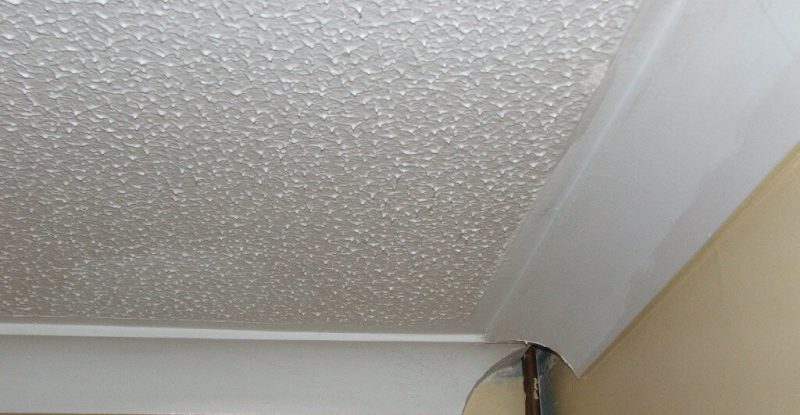Q. My property has Artex ceilings throughout, which look very dated nowadays. I’ve heard that having them plaster skimmed is messy and expensive. Also, it can look odd because the edges of the coving disappear. Is there an alternative? A disguise even?
A. Artex is a brand of textured paint used to make decorative patterns on plasterboard, or to cover up cracks in old ceilings (although this is rarely successful). Other brands are Wondertex, Suretex and Newtex, but they all tend to get referred to as ‘Artex’. The big problem with these textured finishes is that they may contain asbestos. The Artex brand itself was still being manufactured with chrysotile (“white asbestos”) as recently as 1984. So textured finishes should not be drilled or dry-sanded, as the asbestos fibres could be released into the air and inhaled. The amount of chrysotile included in the mix was small, and there is still something of a debate over exactly how dangerous chrysotile might be. Some experts even claim it is chemically identical to talcum powder, and that it has been unfairly tarnished by the “asbestos” label.
However, the view in the construction industry is that any asbestos product should be treated with caution, and the HSE insists that the chrysotile used in textured coatings has the potential to be a human carcinogen. Since the coating binds the asbestos into a solid material, and as long as the material is not damaged, there is little or no danger of the fibres being released into the air, and thence finding their way into occupants’ lungs. There is no statutory requirement for such coatings to be removed, and HSE advice is that as long as the coating is in good condition, it is usually safer to leave it undisturbed and in place, rather than risk releasing fibres into the air by removing it.
The Health and Safety Executive (HSE) website (www.hse.gov.uk/asbestos ) is a mine of information, and publishes free downloadable advice sheets on all aspects of asbestos removal.
The coating can be left in place and skimmed over with ordinary multi-finish plaster, or a special coating called Artex Ceiling Finish, which is supplied by the current owners of the Artex brand name. The only problem with this approach is that the ceiling or wall in question should then really be labelled, to warn future occupants or builders of what lurks beneath. And, as you say, it might make your coving look odd.
If you would prefer to remove Artex instead, then it can be done using a wet method – using either a wallpaper steamer or a special gel. As long as the material remains damp, the fibres will not become airborne. Safety precautions still need to be taken, of course, including sealing doors and windows with polythene sheeting, and wearing disposable overalls and a suitable respirator. The scrapings should be securely bagged-up while still damp, labelled “Asbestos”, and taken to your local authority’s licenced disposal site.
Before you do anything, however, do visit www.hse.gov.uk/asbestos and acquaint yourself with the advice and legislation. You will see that the rules are different for homeowners and contractors. A business engaged in asbestos removal, for example, might be obliged to notify the HSE about removal, even when it is for asbestos-cement sheeting or textured coatings, and can therefore be carried out by a non-licenced contractor – so called “Notifiable non-licenced work” or NNLW.

